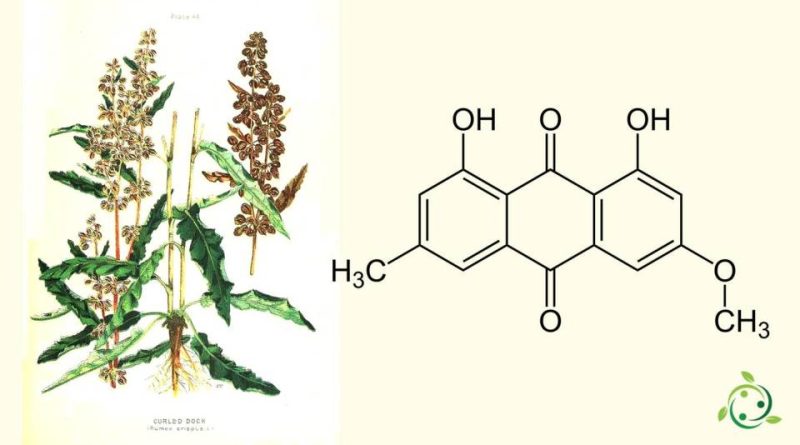Parietin
Parietin
Parietin, whose term in the official IUPAC nomenclature is: 1,8-dihydroxy-3-methoxy-6-methylanthracene-9,10 dione, is also known by the names of: physcione, reocrisidina or metoxiemodina.
Parietin has a brute or molecular formula: C16H12O5 and is the predominant cortical pigment of the lichens of the genus Caloplaca, a secondary product of the lichen Xanthoria parietina (L.) Th. Fr., 1860, and a pigment found in the roots of the Romice (Rumex crispus L.) and in the Rhubarb plant.
Parietin is a yellow-orange pigment that absorbs blue light.
Parietin plays a protective action against UV-B light in lichens, in high altitude areas in the Alpine regions.
In these conditions, UV-B light stimulates the production of parietin which protects the lichens from damage.
Lichens growing in arctic regions also retain this ability although there are no harmful levels of UV-B, a capability that could help protect lichens in the event of a thinning of the ozone layer.
Parietin has shown, in some researches, antifungal activity against barley powdery mildew and cucumber powdery mildew, more effectively in the latter case than treatments with phenarimol and polyoxin B.
The parietin reacts with KOH to form an intense magenta-red compound.
Research has also been carried out in the oncology sector.
Parietin, identified from an FDA database of 2,000 known 6PGD suppressors, killed half of human leukemia cells in the laboratory over a two-day period.
The pigment also slowed the growth of other human cancer cells in mouse models, according to this research.
In addition, a more potent derivative of parietin, called S3, can even reduce the growth of lung cancer cells implanted in mice by two-thirds over the course of 11 days. The compound also appears to be non-toxic to healthy cells.
Warning: The information shown is not medical advice and may not be accurate. The contents are for illustrative purposes only and do not replace medical advice.

